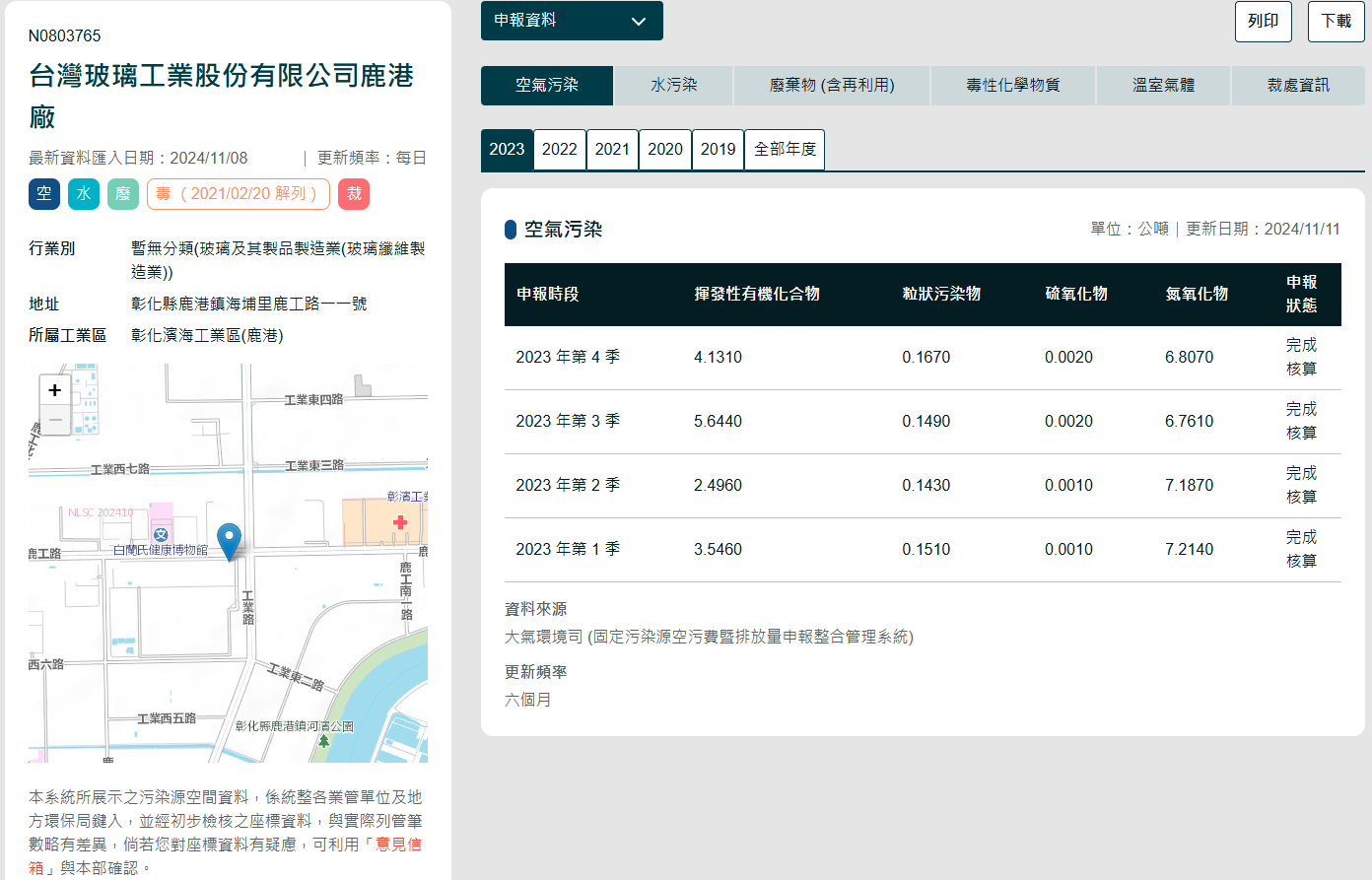Pollutant Release and Transfer Register
Introduction
To promote the transparency and open dissemination of information on environmental issues, the MOENV (Ministry Of Environment) has changed the way that the control data of pollution sources are listed separately by air, water, waste, poison, and other business units in the past, and refer to the international pollutant discharge and transfer registration system. (Pollutant Release and Transfer Register, PRTR), after exporting the listed pollution source permit and declaration data from the respective industry management systems, it is integrated into a single portal (portal) "listed pollution source information (including punishment information) query system" (hereinafter referred to as the PRTR system) public inquiry. Adhering to the principle of giving priority to public interests, gradually expand the disclosure of information, protect the public's right to know, reflect the Government's Open Information Law and implement the spirit of the environmental right to know, enhance the public's understanding, trust and supervision of public affairs, and promote public participation.
At present, my country's PRTR system - "Inquiry System for Listed Pollution Source Data (including punishment information)" was officially launched in 2012, including air pollution, water pollution, waste, toxic chemical substances, etc. pollution source data. Units, such as agriculture and animal husbandry, oil and gas mining, chemical product manufacturing, etc., are uploaded to the environmental resource data exchange platform (CDX) and provided, and according to the update frequency of the data table, the data is fixed and automatically updated to ensure that the data is consistent Immediate, in addition, CDX provides exchange data format and simple rule checking, which can detect data quality problems early in the data transmission process to ensure data accuracy.
Three Features of PRTR
1. The GIS geographic information system allows the public to search and query the surrounding environment for the emission of the listed pollution sources, which units emit... etc. and presents the geographical spatial distribution of the query results, visualizes the data, and presents it on the map, which is convenient for The public can grasp a variety of pollution sources at one hand, and can also see the information of pollution sources in the surrounding environment at a glance. It also makes an important contribution to environmental transparency and public participation.

2. To provide inquiries on "arbitration information", the "Environmental Enforcement Management System" of the Environmental Management Administration of the MOENV (Ministry Of Environment) collects information on the enforcement of fines by Ministry of Environment at all levels against the listed enterprises.
3. In response to the international trend of voluntary carbon disclosure, the MOENV (Ministry Of Environment), after consulting the wishes of the industry, discloses the relevant emission data in the query system of listed pollution sources (including punishment information) (the data source is the Mandatory Greenhouse Gas Reporting System), to provide inquiries from all walks of life.
History and Prospects
It has been 12 years since my country implemented the listed pollution source data query system by 2024, and the cumulative number of users of the system has reached nearly 3.2 million.
Environmental pollution and its emissions are closely related to our daily life. Disclosing information through the platform implements the spirit of the public's right to know the environment and reduces the disclosure of unequal environmental information. Under the continuous implementation of the goal of environmental protection and green life, PRTR The system plays an important role in preventing serious pollution incidents from happening again in advance.